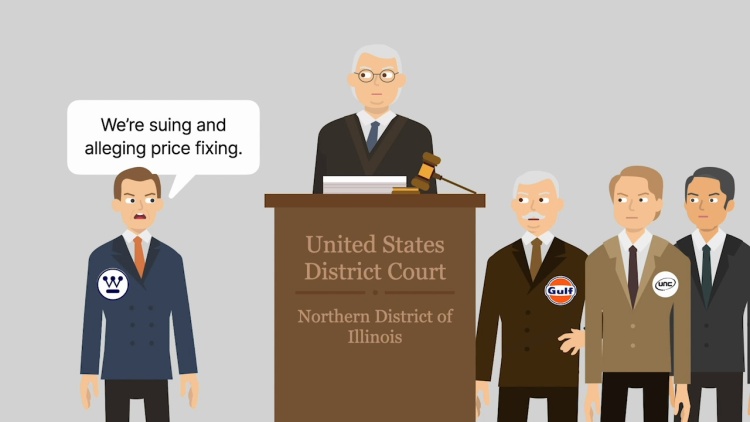Westinghouse Elec. Corp. v. Gulf Oil Corp.
United States Court of Appeals for the Seventh Circuit
588 F.2d 221 (1978)
- Written by Rose VanHofwegen, JD
Facts
In 1968, large uranium reserves were discovered in New Mexico. By 1971, Gulf Oil Corp. (codefendant) had acquired a substantial portion of those reserves, known as the Mt. Taylor properties. For the next five years, the law firm Bigbee, Stephenson, Carpenter & Crout (Bigbee) represented Gulf in connection with its New Mexico uranium operations. Nine of Bigbee’s 12 attorneys handled Gulf work, including numerous mining patents and real estate transactions. One Bigbee partner alone spent over 2,000 hours on Gulf work. In 1976, Westinghouse Electric Corporation (plaintiff) brought an antitrust suit against multiple uranium suppliers, including Gulf and United Nuclear Corporation (UNC) (codefendant), alleging that they colluded to fix uranium prices. Bigbee appeared on behalf of UNC—not Gulf. Gulf moved to disqualify Bigbee, arguing that its previous representation was substantially related to issues raised in the antitrust suit. Specifically, Gulf was not producing uranium from Mt. Taylor, although it constituted Gulf’s largest uranium supply at the time. Gulf argued that its reasons for not producing Mt. Taylor uranium would be material to Westinghouse’s allegations that mining companies were withholding uranium supplies to artificially inflate prices. Gulf also argued that it was adverse to UNC in the antitrust suit because UNC was trying to exculpate itself by inculpating Gulf. But the trial judge refused to disqualify Bigbee, reasoning that the prior representation focused on real estate transactions connected with undeveloped reserves, whereas the antitrust suit alleged a price-fixing conspiracy that would focus on arguably unrelated discussions among uranium suppliers. Gulf appealed.
Rule of Law
Issue
Holding and Reasoning (Sprecher, J.)
What to do next…
Here's why 899,000 law students have relied on our case briefs:
- Written by law professors and practitioners, not other law students. 47,000 briefs, keyed to 994 casebooks. Top-notch customer support.
- The right amount of information, includes the facts, issues, rule of law, holding and reasoning, and any concurrences and dissents.
- Access in your classes, works on your mobile and tablet. Massive library of related video lessons and high quality multiple-choice questions.
- Easy to use, uniform format for every case brief. Written in plain English, not in legalese. Our briefs summarize and simplify; they don’t just repeat the court’s language.





